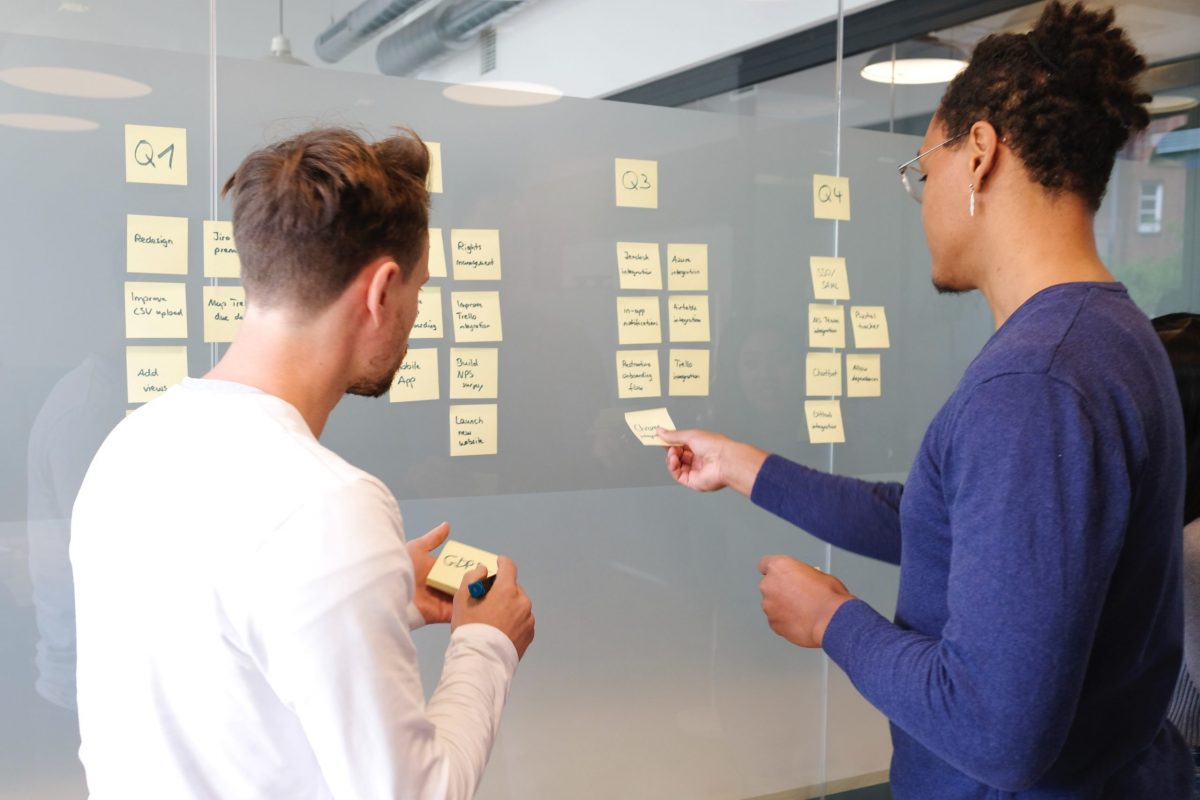Innovation sounds good, looks good, but it doesn’t always feel good. Why? Because making innovation happen in a large organization is an arduous process. The story we usually hear about this topic is like a mediocre superhero movie. It shows a character that finds a superpower, struggles just a little bit, and then is victorious. By the end of the film, we know we didn’t like it, but we don’t understand why. There were endless fighting scenes and the hero was too tough. What is the problem with this? It doesn’t feel real. We need to see the pain, the characters’ real suffering to believe their journey and value their victories. Embedding innovation into an organization is a lot like this. I used to think that being an innovator was a matter of toughness or inventiveness, but it is not.
How is innovation like a flat tire?
Bear with me while I share a personal anecdote. The other day, I had a flat tire. I remember getting out of my car, seeing the flat tire and thinking: “Why today?! I can’t get a break”. I was tired. I knew I have insurance to help me to change the tire, but my macho ego was telling me:
– Can’t you change a simple tire? You have to change it with no help –
So, I hung up the call to the insurance company, grabbed the tools, and started to change the tire myself. But I couldn’t catch a break because the nuts wouldn’t loosen, so I got angry. I wanted to throw the tools and start crying. You may wonder: What are you making such a big deal out of a simple flat tire? Indeed, it was not a big deal. What was the problem?
The problem was not the tire. The problem was not that I could not find a solution. My problem was the meaning I was giving to my lack of ability to loosen up a nut. The problem was I was feeling weak and inadequate for this simple task. After my short crisis, I called the insurance company again and asked for their help. I remember telling myself: “A guy will come and laugh at me because of my poor handyman skills.” I was even thinking of creative answers to defend myself from his attacks. In other words, I was mad at someone I had not even met.
He arrived 30 minutes later. I had loosened up two nuts, but I had three remaining and a broken ego. I saw this man in his mid-50s approaching my car with no judgment. He tried to loosen them and he couldn’t. I had mixed feelings at that moment (I was kinda happy). He was very considerate and explained the nuts were hard to remove because they were old. Luckily, he had some tools to solve the issue. He took out another lug wrench, a hammer, and a long pipe and used it as a lever to remove the nuts, and voila. All that I needed was some tools and a simple lever.
Embedding innovation in your organization
 This is precisely how innovation in a corporation works. It is a hard job, with multiple tasks and things to do. You might be working on designing a new solution, defining the precise value proposition, and trying to get the buy-in from different stakeholders. Suddenly, an apparently simple problem is holding things up, and you might feel like it is the end of the world. You feel shame. You question your value, your capabilities, your management skills, or even your work.
This is precisely how innovation in a corporation works. It is a hard job, with multiple tasks and things to do. You might be working on designing a new solution, defining the precise value proposition, and trying to get the buy-in from different stakeholders. Suddenly, an apparently simple problem is holding things up, and you might feel like it is the end of the world. You feel shame. You question your value, your capabilities, your management skills, or even your work.
The problem might seem simple from the outside. Again, it is about the meaning we assign to why we are struggling and feeling like there is a massive wall in our way. In these moments, I have learned that the key to moving forward is to master my emotions and be aware of the mindset that I am using to see the problem. For example, being trapped in a knower mindset makes the issue personal. The dialogue in my head is: “I should know this.” Then everything starts to escalate, and things get out of control. This makes things worse because a knower mindset demands control.
But instead, I can choose a different path: The learner mindset. This requires a humble approach that recognizes that I do not have to know everything. That I can ask for help because there might be a skill or a tool that I am missing to solve the problem. That the person from the other department is not going to laugh at me, and instead, they want the opportunity to help me.
In the end, this is the better superhero movie, with a scared character who is brave enough to keep walking in the darkness of vulnerable moments. As an innovation leader, you don’t have to do it all by yourself. You do not have to have all the skills to make innovation happen. I believe that is impossible. The nuts in this story may represent an outdated process, a risk-averse mindset, misaligned incentives, or a frustrated team.
If you are developing a new product and feel stuck, don’t panic. Accept vulnerability and ask for help. You might find a person with the perfect innovative lever to loosen up the nuts fixated on an old way of doing things.
